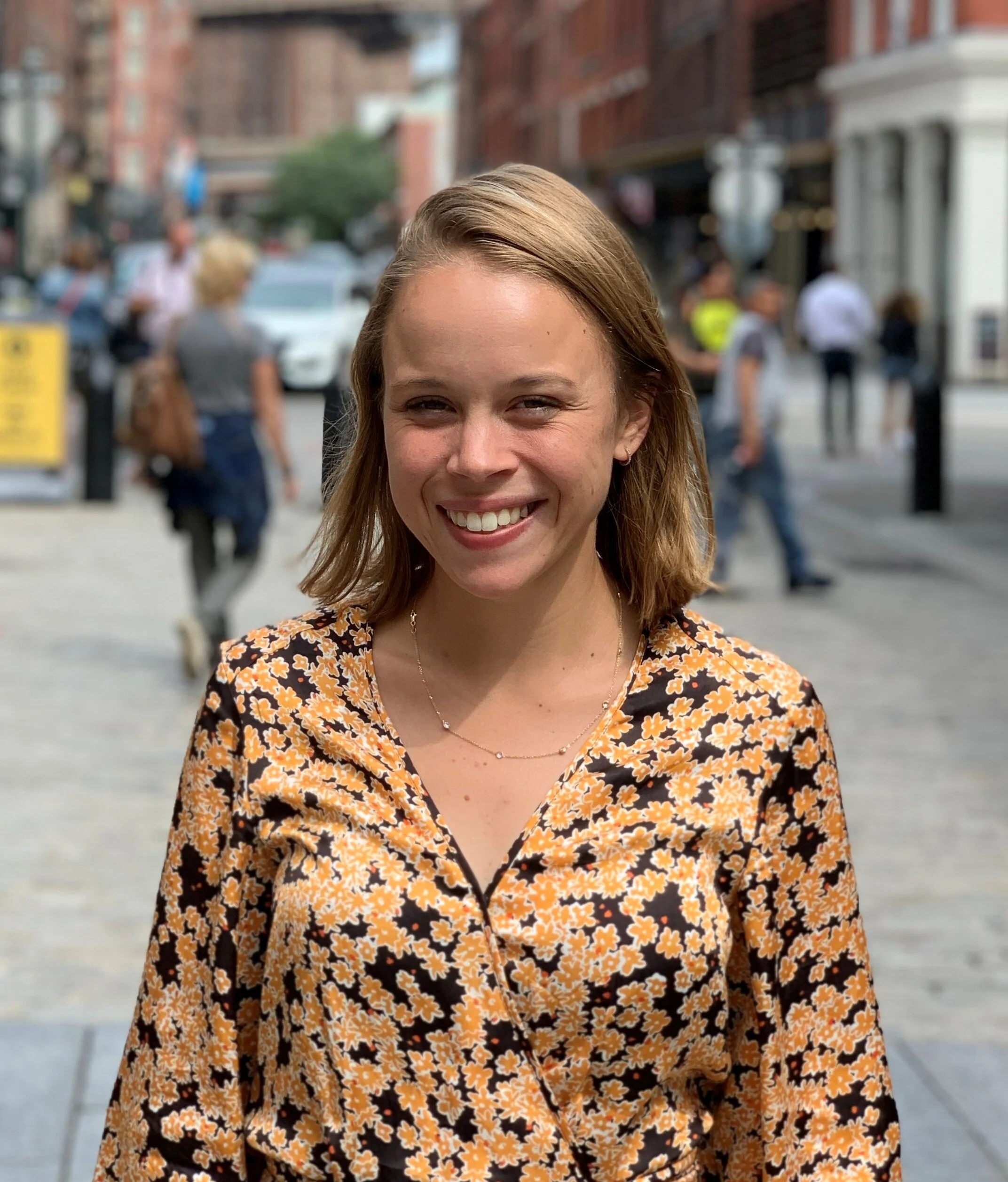Lauren Culbertson has been on a learning journey with Starfire over the past year. First, she spent a few days with us on assignment from Coburn Venture’s Community For Change (CFC) to learn about community, change, and innovation. Then she joined Starfire’s leadership event, alongside 15 other nonprofit seeking to making changes to the current disability service model. And again came to Starfire when we hosted Darcy Elks to learn about the power of image, connectedness and relationships.
This writing is an excerpt from her notes on what her learning has meant for her personally. We love sharing these notes because as a learner, Lauren is adding so much wisdom and experience to our work at Starfire. #letsgettoit
To say that Starfire is a nonprofit in Cincinnati that works with people who have disabilities is one of the greatest understatements of the decade. Yes, this is true stripped down to the most literal sense, but it is impossible to summarize Starfire by the people it serves and fully capture the spirit of the transformational work they are doing, breaking down artificial barriers and bridging the private and public life of neighbors.
Tim and Bridget Vogt started Starfire in 2003 out of their passion to see adults living with disabilities in the Cincinnati area live meaningful lives. So, they designed a program that was and still is a very popular model to address the challenge of people living with disabilities not being able to enjoy life like everyone else: day programs. Starfire originated as a center where adults with disabilities could come together each day and participate in activities like cooking, playing games, going on field trips around the city, or taking classes. People would be dropped off in the morning by their parents or whoever they were living with and then go back home and do it all over again the next day.
I distinctly remember the first time I met Tim and he told his story. He said the moment the lightbulb went off for him was when he realized that they were creating “parking lots” rather than “launching pads” for the people that were coming to the day program. All they were doing was keeping them in the boxes where society had put them. The model reinforced the stereotypes that people with developmental disabilities could only flourish when with other people with disabilities, or that they couldn’t make decisions for themselves about how they wanted to spend their time, or that they didn’t add much value to the rest of their communities. Tim and Bridget realized that the entire model upon which they had built this growing nonprofit over the last five or more years was not really doing much to help…at best, it was just keeping people right where they were and supporting negative stereotypes for the rest of the people around them.
So, Tim and Bridget did something that is really really hard for an entrepreneur of any kind: they admitted they made a mistake and that things needed to be radically changed.
They needed to let the Starfire that they had come to know die.
And today, Starfire IS radically different than the day program it once was. The model is much more decentralized (the building where the day program was once held is now rented out as office space to other nonprofits). The unit of participation (for lack of a better phrase) is no longer just people with disabilities, but entire families. Starfire’s core program today is giving sizable grants to families to do independent projects that work to integrate the family better in the community and build natural relationships between people who have a disability and people who don’t.
It puts the power into the hands of families and local communities and says, “I trust that you know how to be the best stewards of this funding.”
The goal is to empower families to play a role in “artfully facilitating” relationships between their family, their family member who have a disability, and their local community. And what they are doing seems to be working now.
But this change made some families and funders who partnered with Starfire very uncomfortable…even angry. Some cut ties completely.
The beliefs held by Tim and other Starfire leaders such that day programs should be abolished, that too often institutions are making decisions for people that they are fully capable of making themselves, or that the value of a person is not derived from their economic contribution to society, are still far from mainstream. As I witnessed in the conversation of some Starfire families and disability practitioners, these ideas completely go against the grain of traditional thinking of how we as a society can best help those with disabilities. It is not comfortable to start to wonder if the way you have thought about something – especially something directly related to the identity of a son, daughter, or patient – may not be what is for the best.
We have become a society conditioned for comfort. We struggle to sit on the train or wait in a line without scrolling through a newsfeed. We are obsessed with good-smelling candles and oils and set our thermostats to our exact preferred temperature. We like to surround ourselves with people who reaffirm our beliefs and who we can commiserate with, we surround ourselves with media that creates an echo chamber of what we are already thinking. We like to live around people who are just like us. We’ll do just about anything to stay comfortable and make sure that comfort is not disturbed.
But where is the joy in that?
During a break in one of the workshops I got to attend at Starfire, I stepped into an empty conference room to take a call. Soon after, a young woman whose name I later learned was Ann, walked into the room, leaning on another woman. I recognized them both from the audience. Ann is nonverbal and has limited mobility, and in full transparency, I don’t think I had ever had a conversation with someone who is nonverbal before. As I continued my phone call, Ann walked towards me, looking at me straight in the eye. The woman she was with smiled. In full transparency, I felt pretty uncomfortable. And I think it was only because of what I had learned those last few days at Starfire that after I hung up the phone, I smiled back and gently took Ann’s hand and said, “Hi, I’m Lauren, it’s nice to meet you.”
If it had been at any other time or context, I don’t think I would have talked with Ann.
Why?
Because I was uncomfortable with not knowing how Ann and I could communicate since we communicate differently, and I probably wouldn’t have wanted to lean into discomfort out of fear of making a fool of myself or offending or just doing something wrong.
One of the things Starfire reinforced for me is that there comes a point where remaining in comfort is no longer productive.
In his “Letter to a Birmingham Jail” at the height of the Civil Rights Movement, Martin Luther King Jr. talks about how tension – perhaps another term for “discomfort” – is imperative for progress as a society:
“Just as Socrates felt that it was necessary to create a tension in the mind so that individuals could rise from the bondage of myths and half-truths to the unfettered realm of creative analysis and objective appraisal, so must we see the need for nonviolent gadflies to create the kind of tension in society that will help men rise from the dark depths of prejudice and racism to the majestic heights of understanding and brotherhood.”
It is perhaps a societal construct that we need to avoid discomfort, that it is a bad thing. But when looking back upon the arc of human history, in retrospect, the greatest leaps and bounds society has made were preceded by eras of tension. Today more than ever, Western society holds us to an expectation to have an answer – and to be convicted in that answer – at all times. My time with Starfire has also reinforced the importance of allowing space for people to feel uncomfortable – even encouraged to feel uncomfortable - and feel supported in getting to a place where maybe they will say,
“I am going to change my mind. Maybe there is a lot I don’t know, and I want to learn more.”
There is freedom and there is joy in being able to utter that statement without judgement and knowing that you have a community of people behind you. Without tension, we – and the rest of our communities – remain stagnant. We don’t progress. In my case, I would not have made a new friend. I don’t think we find joy just when we are comfortable…I think joy sometimes comes after (even during) periods of discomfort, periods that produce growth, progress, inclusion, even a greater sense of love.


